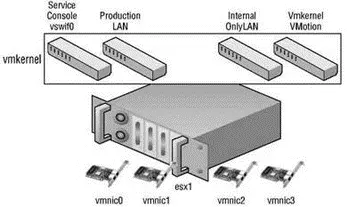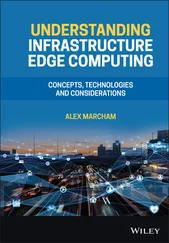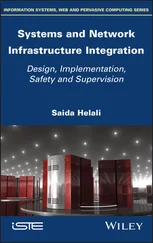Chris McCain - Mastering VMware® Infrastructure3
Здесь есть возможность читать онлайн «Chris McCain - Mastering VMware® Infrastructure3» — ознакомительный отрывок электронной книги совершенно бесплатно, а после прочтения отрывка купить полную версию. В некоторых случаях можно слушать аудио, скачать через торрент в формате fb2 и присутствует краткое содержание. Город: Indianapolis, Год выпуска: 2008, ISBN: 2008, Издательство: WILEY Wiley Publishing, Inc., Жанр: Программы, ОС и Сети, на английском языке. Описание произведения, (предисловие) а так же отзывы посетителей доступны на портале библиотеки ЛибКат.
- Название:Mastering VMware® Infrastructure3
- Автор:
- Издательство:WILEY Wiley Publishing, Inc.
- Жанр:
- Год:2008
- Город:Indianapolis
- ISBN:978-0-470-18313-7
- Рейтинг книги:5 / 5. Голосов: 1
-
Избранное:Добавить в избранное
- Отзывы:
-
Ваша оценка:
- 100
- 1
- 2
- 3
- 4
- 5
Mastering VMware® Infrastructure3: краткое содержание, описание и аннотация
Предлагаем к чтению аннотацию, описание, краткое содержание или предисловие (зависит от того, что написал сам автор книги «Mastering VMware® Infrastructure3»). Если вы не нашли необходимую информацию о книге — напишите в комментариях, мы постараемся отыскать её.
Mastering VMware® Infrastructure3 — читать онлайн ознакомительный отрывок
Ниже представлен текст книги, разбитый по страницам. Система сохранения места последней прочитанной страницы, позволяет с удобством читать онлайн бесплатно книгу «Mastering VMware® Infrastructure3», без необходимости каждый раз заново искать на чём Вы остановились. Поставьте закладку, и сможете в любой момент перейти на страницу, на которой закончили чтение.
Интервал:
Закладка:
Virtual switch A switch that resides in the VMkernel and provides traffic management for virtual machines.
Port/port group A logical object on a virtual switch that provides specialized services for the Service Console, VMkernel, or hosted virtual machines. A virtual switch can contain a Service Console port, a VMkernel port, or a virtual machine port group.
Service Console port A specialized virtual switch port type that is configured with an IP address to allow access to the Service Console at the respective address. A Service Console port is also referred to as a vswif.
VMkernel portA specialized virtual switch port type that is configured with an IP address to allow VMotion, iSCSI storage access, or NAS/NFS storage access. A VMkernel port is also referred to as a vmknic.
Virtual Machine port group A specialized virtual switch port that is representative of a switch-to-switch connection and that allows virtual machines to access physical networks.
Virtual LAN (vLAN) A logical LAN configured on a virtual or physical switch that provides efficient traffic segmentation, security, and efficient bandwidth utilization by providing traffic only to the ports configured for a respective vLAN.
Trunk port (trunking) A trunk port on a switch is a port that listens for and knows how to pass traffic for all vLANs configured on the switch.
NIC team The aggregation of physical ports to form a single logical communication channel.
vmxnet adapter A virtualized network adapter operating inside a guest operating system. The vmxnet adapter is a high-performance virtual network adapter that operates only if VMware Tools have been installed. The vmxnet adapter is identified as "flexible" in the virtual machine properties.
vlance adapterA virtualized network adapter operating inside a guest operating system. The vlance adapter is the default adapter used until the VMware Tools installation has been completed.
e1000 adapter A virtualized network adapter that emulates the Intel e1000 network adapter. The e1000 network adapter is most common in 64-bit virtual machines.

Figure 3.1Successful virtual networking is a blend of virtual and physical network adapters and switches.
The networking architecture of ESX revolves around the creation and configuration of virtual switches. Virtual switches are created and managed through the Service Console, but they operate within the VMkernel. Virtual switches provide the connectivity to provide communication:
♦ between virtual machines within an ESX Server host
♦ between virtual machines on different ESX Server hosts
♦ between virtual machines and physical machines on the network
♦ for Service Console access
♦ for VMkernel access to networks for VMotion, iSCSI, or NFS
Figure 3.1 details the various communication channels provided by virtual network adapters through virtual switches created in the VMkernel. The VMkernel then manages the virtual switch communication through a physical network adapter to connect the virtual and physical networking components.
As the virtual network implementation makes virtual machines accessible, it is essential that virtual switches be configured in a manner that supports reliable and efficient communication around the different network infrastructure components.
Creating Virtual Switches and Port Groups
The answers to the following questions are an integral part of the design of your virtual networking:
♦ Do you have a dedicated network for Service Console management?
♦ Do you have a dedicated network for VMotion traffic?
♦ Do you have an IP storage network? iSCSI? NAS/NFS?
♦ How many NICs are standard in your ESX Server host design?
♦ Is the existing physical network comprised of vLANs?
♦ Do you want to extend the use of vLANs into the virtual switches?
As a precursor to the setup of a virtual networking architecture, the physical network components and the security needs of the network will need to be identified and documented.
Virtual switches in ESX Server are constructed and operated in the VMkernel. Virtual switches (also known as vSwitches) are not managed switches and do not provide all the advanced features that many new physical switches provide. These vSwitches operate like a physical switch in some ways, but in other ways they are quite different. Like their physical counterparts, vSwitches operate at Layer 2, support vLAN configurations, prevent overdelivery, forward frames to other switch ports, and maintain MAC address tables. Despite the similarities to physical switches, vSwitches do have some differences. A vSwitch created in the VMkernel cannot be connected to another vSwitch, thereby eliminating a potential loop configuration and the need to offer support for Spanning Tree Protocol (STP). In physical switches, STP offers redundancy for paths and prevents loops in the network topology by locking redundant paths in a standby state. Only when a path is no longer available will STP activate the standby path.
Though the VMkernel does not allow looping because it does not allow vSwitches to be interconnected, it would be possible to manually create looping by connecting a virtual machine with two network adapters to two different vSwitches and then bridging the virtual network adapters. Since looping is a common network problem, it is a benefit for network administrators that vSwitches don't allow looping and prevent it from happening.
ESX Server allows for the configuration of three types of virtual switches. The type of switch is dependent on the association of a physical network adapter with the virtual switch. The three types of vSwitches, as shown in Figure 3.2 and Figure 3.3, include:
♦ Internal-only virtual switch
♦ Virtual switch bound to a single network adapter
♦ Virtual switch bound to two or more network adapters

Figure 3.2Virtual switches provide the cornerstone of virtual machine, VMkernel, and Service Console communication.

Figure 3.3Virtual switches created on an ESX Server host manage all the different forms of communication required in a virtual infrastructure.
The maximum number of vSwitches for an ESX Server host is 127. Virtual switches created through the VI Client will be provided default names of vSwitch#, where # begins with 0 and increases sequentially to 127.
By default every virtual switch is created with 64 ports. However, only 56 of the ports are available and only 56 are displayed when looking at a vSwitch configuration through the Virtual Infrastructure client. Reviewing a vSwitch configuration via the esxcfg-vswitch command shows the entire 64 ports. The 8 port difference is attributed to the fact that the VMkernel reserves these 8 ports for its own use.
Once a virtual switch has been created the number of ports can be adjusted to 8, 24, 56, 120, 248, 504, or 1016. These are the values that are reflected in the Virtual Infrastructure client. But, as noted, there are 8 ports reserved and therefore the command line will show 32, 64, 128, 256, 512, and 1,024 ports for virtual switches.
Читать дальшеИнтервал:
Закладка:
Похожие книги на «Mastering VMware® Infrastructure3»
Представляем Вашему вниманию похожие книги на «Mastering VMware® Infrastructure3» списком для выбора. Мы отобрали схожую по названию и смыслу литературу в надежде предоставить читателям больше вариантов отыскать новые, интересные, ещё непрочитанные произведения.
Обсуждение, отзывы о книге «Mastering VMware® Infrastructure3» и просто собственные мнения читателей. Оставьте ваши комментарии, напишите, что Вы думаете о произведении, его смысле или главных героях. Укажите что конкретно понравилось, а что нет, и почему Вы так считаете.












